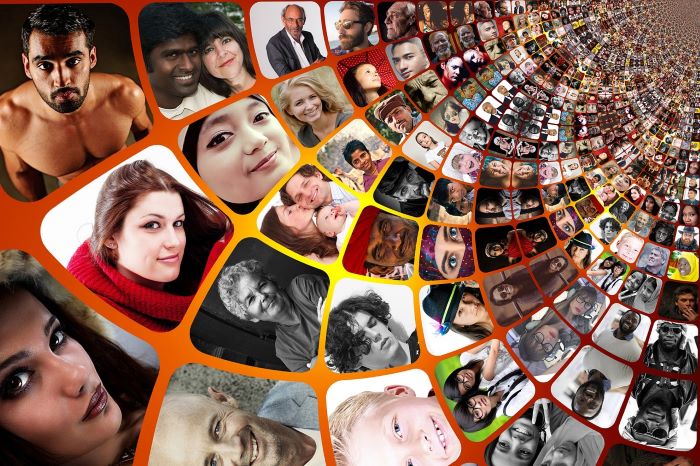Lifestyle
Top 5 Innovative Strategies Used by Entertainment Venues to Attract Diverse Audiences

Entertainment venues are sure to want to attract diverse audiences, both to foster inclusivity and to expand profitability. In fact, finding innovative strategies to attract a broad spectrum of visitors is not just shrewd; it’s essential for survival. Those who succeed often do so by embracing cutting-edge techniques that resonate with a variety of demographics.
The landscape continues to evolve as venues adopt unique entertainment offerings, deploy inclusive marketing campaigns and expand their digital outreach efforts. These methods aren’t merely trends but pivotal shifts in the approach to audience engagement, spawning experiences that connect and endure.
So, let’s explore the top five innovative strategies used by entertainment venues to attract diverse audiences.
Engaging Diverse Demographics Through Tailored Environments
Entertainment venues, which range from lively casinos to serene art galleries, are mastering the art of attraction by curating environments tailored to diverse demographics.
Many casinos are expanding their reach by organising themed nights and culturally varied events that draw in a broader audience with differing interests. For instance, this article – which is a great review of Scioto Downs Casino in Ohio – states that the casino has an exciting array of events and entertainment that caters to different people, including live harness horse racing during the summer!
Meanwhile, live music venues are diversifying their line-ups more and more, booking artists that appeal across generational divides and cultural backgrounds. This not only broadens their appeal but fosters a melting pot of fans who might be drawn to the venue for different reasons—and keep returning for the discovery of something new.
Also, art galleries and theatres have noticed an increased attendance among various ethnic groups when they showcase works reflecting those communities’ stories. By programming a schedule rich in variety and relevance, these venues become communal hubs where discussions are sparked, cultures meet and appreciation is deepened.
In this proactive embrace of audience diversity through tailored experiences, entertainment destinations craft moments that resonate widely—inviting curiosity and creating connections among an eclectic mix, which is an innovative strategy that goes far beyond mere entertainment.
Using Inclusive Marketing That Mirrors Society
The reflection of society’s rich tapestry in marketing materials is not just good practice; it’s an art form that entertainment venues are perfecting to attract diverse audiences.
Inclusive storytelling through marketing campaigns serves as a bridge, inviting people from all walks of life to see themselves within the narrative.
Theatres have taken to spotlighting underrepresented groups in their promotional material, ensuring potential patrons feel seen and valued. A Broadway production might feature actors of various ethnicities or highlight themes central to different communities, for instance, signalling an open and inclusive environment.
Music festivals are curating line-ups with gender balance and genre diversity, then echoing this inclusivity in their advertising. Their campaigns reach out across social media platforms with messaging that emphasises unity and the shared love of music, resonating with a wider demographic.
Even family entertainment centres have shifted gears—away from generic ads. They now typically employ multilingual signage and relatable family scenarios that appeal to a broader cultural audience.
By showcasing this kaleidoscope of humanity in their marketing efforts, venues assert a welcoming stance for everyone looking to be entertained or enlightened.
Adopting the Power of Personalized Connection
The evolution of digital outreach has become pivotal in engaging a broad cross-section of society. Entertainment venues are leveraging data analytics and AI to cultivate personalised connections with audience members, creating highly targeted campaigns that resonate on an individual level.
Social media platforms are at the forefront of this movement. By employing sophisticated algorithms, venues can deliver content that aligns with the unique interests and cultural backgrounds of users. For example, a jazz club might use listening habits tracked by social media to suggest upcoming performances tailored to user preferences.
Email marketing has also seen a renaissance through personalization. Rather than blanket messages, subscribers receive curated newsletters spotlighting events that reflect their past attendance patterns or expressed interests. This not only increases engagement but demonstrates attentiveness to individual tastes.
Curating Culturally Conscious Spaces
Forward-thinking entertainment venues are transforming their physical spaces to welcome and celebrate the diversity of their audience. This goes beyond mere access; it’s about creating culturally conscious environments that speak to a varied demographic tapestry.
Spaces like concert halls, comedy clubs and even sports arenas are integrating design elements that pay homage to the cultural richness of the communities they serve. From artwork and décor that reflect local customs and cultures to multilingual signage and menu offerings, these small but significant touches show an attention to inclusivity that does not go unnoticed.
In another strategic move, venues often host community events aimed at celebrating different cultural festivals or holidays. This not only brings new patrons through the doors but also builds solidarity within the community.
Moreover, some venues have taken steps towards inclusivity by offering sensory-friendly days for neurodiverse individuals or ensuring spaces are accessible for differently-abled guests.
By curating spaces that actively respect and reflect personal experiences, entertainment destinations become more than just places of leisure—they act as pillars of a dynamic and inclusive community.

















































